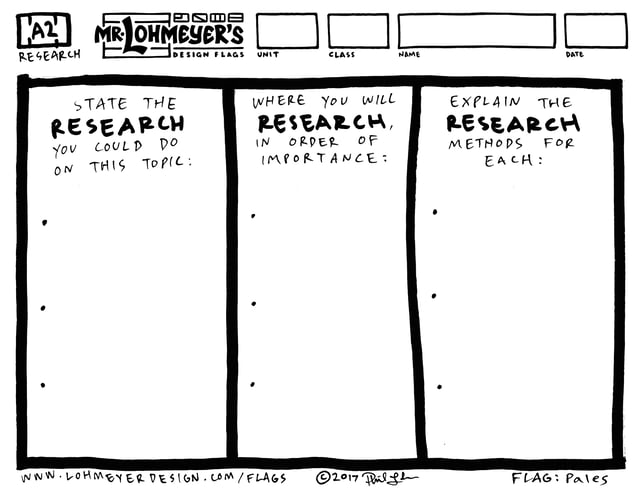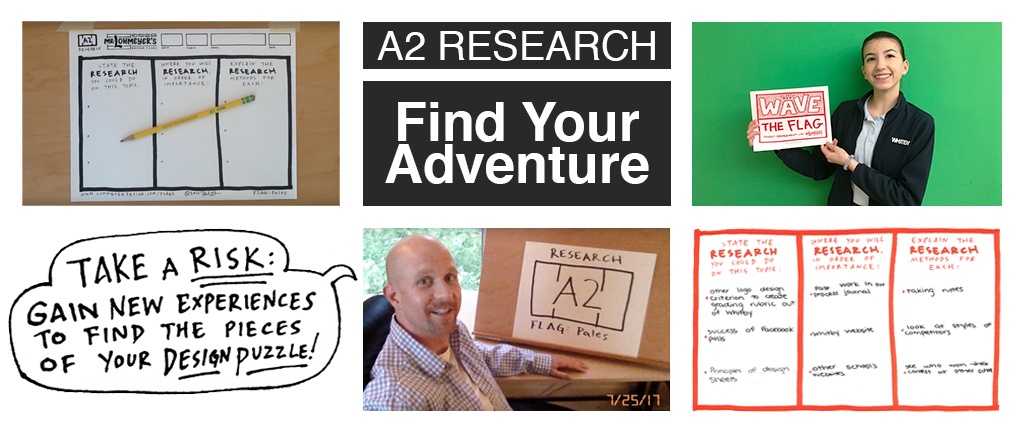Designs exist to serve a purpose, or perform a function. This series of posts will improve your Design Project Management skills. With these pages from WAVE THE FLAG: Project Management with Mr. Lohmeyer’s Design Flags (2017), designers can find common ground here, in the brainstorming process. View all posts here.
With these posts, I want to help you make connections and see patterns with the organized patterns of flag designs. Using pages from WAVE THE FLAG: Project Management with Mr. Lohmeyer’s Design Flags (2017), designers can spot what is missing, in order to modify it before presenting to the public. What is the next piece of your design puzzle?
If you completed the first flag (A1 NEED), and hopefully it was helpful, here’s a chance to use a timeless flag design with Pales to organize your research plan. That way you can increase your awareness of the design category, without wasting time. So even if you don’t know all that much about your design topic, you can go into it knowing a lot about planning your research.
This flag design will help us effectively explore research that you COULD do on this topic, and a few research methods as well. Most people would rather dive right in, start Googling randomly on their phone, but you can waste a lot of time that way. Always PLAN your research so you are making the most effective use of your time. This flag will help us with that. A flag design with Pales, or vertical stripes, we can create a new path for your project. This can be used during the second stage of Inquiring and Analysing, just like 8th grader Victoria did at the end of this post!

Use a Chisel Tip Sharpie to outline the flag, then use a Fine Point Sharpie for the headlines (RESEARCH 3 times). Now for the specifics: with an Ultra Fine Point Sharpie, first state the research that you could do in the first column. Then let’s determine WHERE you will research, in order of importance, in the second column. Prioritizing these will also help us use our time effectively. For the last column, explain the research method for each research location. Remember, to explain something means to describe it, and add reasons. Then, pick 1, and get started with your research!

8th grader Victoria (Class of '18) writes...


